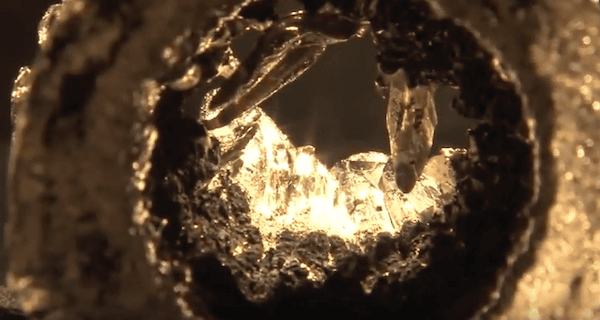
[Image above] Credit: Ames Laboratory; YouTube
If there’s one thing in the world we’re attached to, it’s our smartphones.
But did you know that they could be in danger of extinction if there happens to be a shortage in any one of various materials that go into manufacturing your beloved smartphone?
I don’t mean to incite panic, but allow me to go geek for a minute to explain the “materials” part of that statement. The “materials” to which I am referring are rare-earth elements.
Rare-earth elements are a category of 17 metals that fall into the lanthanide series on the periodic table. These metals are found in the earth’s crust and are used in many products in a multitude of industries, including health care, consumer goods, electronics, lighting, automotive, aircraft, and shipbuilding.
Examples of products that contain rare-earth materials include many electronics, such as smartphones, TV screens, GPS systems, high-performance magnets, rechargeable batteries, and other computer products.
Did you know there are nine rare-earth elements in the iPhone alone?
The medical field uses rare earths in pacemakers, cancer treatment drugs, and surgical medication, to name a few. And the Department of Defense relies on rare earths for production of fighter jets, missiles, and lasers. You can find dozens of applications for rare-earth materials on page 4 of this document.
Demand in technology in the past 20 years has increased the demand for rare earths. Owing to the luck of geography, China holds approximately 50% of the world’s rare earth reserves and controls around 95% of world production—resulting in increased global reliance on China for rare-earth materials.
Our reliance on China goes back to the ‘90s—when two U.S. rare earth production companies went out of business and moved production capacity to China. You can read more about China’s hold on rare earths in this report.
Steps toward rare earth independence
A September 2014 report from the National Center for Policy Analysis (NCPA) concluded that, “To counter the threat of critical minerals shortages, the U.S. needs to develop a domestic rare earths supply chain.”
The Critical Materials Institute (CMI) is a good start toward that independence. Launched in 2013, the CMI’s mission listed on its website is “to assure supply chains of materials critical to clean energy technologies—enabling innovation in U.S. manufacturing and enhancing U.S. energy security.”
The CMI is tasked with four priorities:
- Diversifying sources of critical materials, especially rare earths;
- Creating substitutes for materials in short supply;
- Improving efficiencies of existing resources by recycling and reducing manufacturing waste; and
- Forecasting future materials shortages.
Led by the Ames Laboratory (Ames, Iowa), the CMI works under the auspices of the U.S. Department of Energy. Its team includes scientists and engineers from four DOE labs, seven universities, and nine industry partners.
According to this brief on the CMI website, successes so far include “47 invention disclosures, 13 patent applications, two technology licenses, two open-source software packages, and over 80 refereed publications.”
The CMI’s 5-year $120 million grant expires in 2018, but the DOE could renew its grant based on its overall activity and success.
The seriousness of the CMI’s work cannot be understated. In a 2013 TedX video, CMI director Alex King said because today’s smartphones contain nearly 65 elements (as opposed to 30 elements in older mobile phones), it’s more difficult to recycle them. In addition, “we’re making ourselves more vulnerable to shortages.” A shortage of any one of 65 elements contained in a smartphone would cripple the technology it enables and disrupt product manufacturing.
It’s never a good idea to “put all your eggs in one basket,” as the saying goes. In the case of rare-earth materials, we might rephrase it to say, “don’t rely on one henhouse to source your eggs.” Or, perhaps, it may be time to find an “egg substitute.”
Extending DOE funding of CMI’s grant for another 5 years would help the U.S. move away from one “henhouse” and away from our dependence on China for rare earths.
Watch this video to learn more about the CMI.

Credit: Ames Laboratory; YouTube
Author
Faye Oney
CTT Categories
- Basic Science
- Environment
- Market Insights


